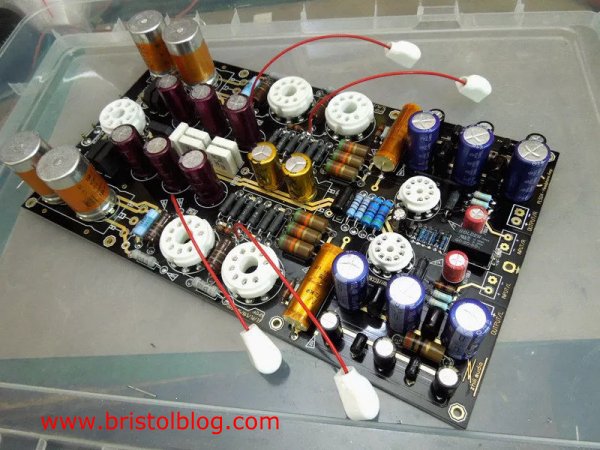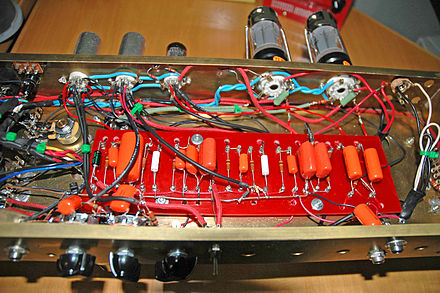
Example of Applied Reason with Electronics
by Lewis Loflin
Follow @Lewis90068157
What is the reason? Before a rational debate, one must have clearly defined words and definitions. Today words are distorted and redefined as meaningless mush.
Before we begin: a "short" is an unwanted electrical conductive path; an "open" is a broken electrical path.
There are two general forms of reasoning - deductive and inductive.
Science is deductive reasoning.
Pseudo-science and social science constitute inductive reasoning. Inductive reasoning too often can't be tested, verified, or replicated.
One is scientific, the other mainly opinion buttressed by authority and untestable hypothesis. Untestable in the material, physical world.
Here my interest is along the lines of applied science and deductive reasoning. Cause and effect events that can be verified and measured in daily reality.
This view comes from decades of repair, trouble-shooting complex electrical equipment, and studies of earth science and mineral collecting. Here is a real-world example.
The thermal expansion and heating of a power-carrying conductor causes the failure of solder connections and can even carbonize a printed circuit board, causing a short circuit. The circuit current path will open, intermittent open, or a short circuit.
I define science as the physical operations of the material world whose explanations are based on empiricism and observed data. Thus the oxidized power connector, carbonized PC board, etc., was caused by an under-rated copper trace - it wasn't heavy enough to carry the current. Undersized conductors produce excessive heat.
There can be other issues. Aluminum wire is outlawed as house wiring causing danger of fire. Aluminum unlike copper forms an oxide coating when exposed to air. This protects the metal from further corrosion. This oxide is non-conducting to electrical current, defined as electrical charges (electrons) passing through a conductor.
AC current due to the interaction of magnetic fields produces what is called "skin effect." The electrons flow along the surface of the wire, with the aluminum oxide producing excessive resistance, thus heating. The wire overheats or can even ignite.
I cleaned up the burn damage and soldered a heavy copper conductor (wire) along the power buss. I concluded repaired this based on no further overheating of the device's conductive path.
I engaged in the following process: I observed an event, created a hypothesis of the cause of the problem based on observation, reason, and experience, tested my theory when I made the repair, and concluded the idea was correct.
This process is the basis of the scientific method. I observed, created a hypothesis, gathered data, and tested the theory. The result confirmed the theory.
I concluded the problem was poor engineering, an under-rated connector. This has been a common warranty problem.
I could still be wrong! Perhaps it was a power surge in combination with component variances and the tolerances of the parts interacting with each other.
While repairing the problem, this failure could be a random event! I have seen this before. Checking the manufacturer's specification sheet specifies the device is within specs, but that could also be wrong! They might have changed some parts' specs or gotten them from a different manufacturer partway through the production process.
Or could it be a manufacturing assembly problem that needs to be corrected? How do I prove this?
I must go further to know for sure if it's not a random set of component electrical tolerances, unexpected power surges, etc. The hypothesis must be falsifiable.
How is the scientific method falsifiable?
A theory or hypothesis is falsifiable (or refutable) if it can be logically contradicted by an empirical test that can potentially be executed with existing technologies.
Or another example:
The Falsification Principle, proposed by Karl Popper, is a way of demarcating science from non-science. It suggests that for a theory to be considered scientific it must be able to be tested and conceivably proven false. For example, the hypothesis that "all swans are white," can be falsified by observing a black swan.
I can test this by checking other circuit boards from the same production run. Is the problem repeated elsewhere? How often is this problem repeated, if at all?
The same problem repeated with other printed circuit boards; I can safely assume a design defect. My original conclusion of faulty engineering was correct.
A good example of faulty engineering were a number of Miller arc welder control boards. PC boards in the welder industry are coated to prevent the toxic and corrosive gasses produced in the welding process from corroding the circuits.
The drawback is air cooling of the PC board is reduced. These particular had a heavy conformal coating and a set of 1-watt burned to the point the epoxy board itself became carbonized. This damaged the board, destroyed the resistors and their solder connections.
I had to dig out the burned resin and burned material, refilled with clean epoxy resin. I used higher wattage replacement resistors, then sprayed epoxy to prevent corrosion. The final test was the boards never had that failure again.
Can't reproduce the problem? My original conclusion was wrong. It might be a random failure.
Even in manufacturing and repair there is pressure to reduce the time. This can lead to cutting corners and having to pay out a warranty repair bill.
Even in this example, gathering a lot of data and performing tests is expensive and time-consuming.
In many cases, there is never a way to know for sure, particularly with complex devices and systems.
In science today, there is too much pressure to publish something even if wrong - and it often is. Often their are no financial or other repercussions for predicting failure.
Scientists must disclose the raw data and methodology used. Many today refuse to do this or limit the information to a chosen circle of fellow believers.
Consensus is "a general agreement." That has nothing to do with science; that is politics.
Now I come to an example of inductive reasoning: inductive reasoning has a hypothesis but limited data and no ability to test the idea directly.
Inductive logic is not scientific. The social sciences rely on inductive reasoning and thus are not considered scientific. There is an ongoing effort to blur the differences between pseudo-science, social sciences, and challenging, verifiable science.
As many audiophiles do, a musician friend used a vacuum tube guitar amp. He brought the pre-amp section to me that was somewhat similar to the image above.
The power supply was blowing fuses. Vacuum tubes operate at 300-400 volts.
Tube sockets are white and round. Vacuum tubes get hot and, over time, degrade other components, particularly electrolytic capacitors.
The board was double-sided, green epoxy fiberglass with conductive copper traces through and on both sides of the board.
An ohm-meter resistance check revealed no direct short circuits. Checking the capacitors showed a few off-values, and I replaced them. It was still blowing fuses.
I checked the vacuum tubes. Pulled the vacuum tubes from their sockets, still blowing fuses.
I found a few locations where the high-voltage may have arced through the fiberglass between tube socket pins. Those were repaired, still blowing fuses.
I could find no direct problem based on measurements with my equipment. I concluded (hypothesized) that there had to be electrical shorts caused by a defective PC board, perhaps between layers I couldn't access.
I told my friend to send it back to the factory. The factory knew the problem was a defective PC board that arced between PC board layers with a high voltage supplied. They replaced the board for free.
In this case, most of my data and measurements revealed little. My observations were limited to inconclusive tests and the original problem of blown power supply fuses. I eliminated apparent causes for the most part.
So I concluded a problem based on experience and the most logical conclusion.

But what if I was wrong? Let's look at a hypothetical example. This event occurred months after I came to the flawed PC board hypothesis.
Another musician brings in their vacuum tube amplifier, which also blows the same power supply fuses. Same problem but no PC board! Same checks as before, nothing conclusive.
A reasonable hypothesis takes into account earlier identical observations. My earlier assumption was likely wrong.
Now I ask, "What is left? I didn't check on both amplifiers?"
In this scenario, it was faulty tube sockets (internal arcing) from a single source used by the manufacturers of both amplifiers!
- Answering the Eco-Luddites Fear of Technology
- Eco-Theology in Public Schools Violates Constitution
- Environmentalism Dominated by Unwitting Religiosity
- Ocean Currents Control Climate
- We Still Live in an Ice Age
- Why we should not fear nuclear power.
- Nuclear Graveyards Abound with Life
- What About Humans and Nuclear Radiation?
- Radiation Basics They Should Teach in High School
- Electronics, Nuclear Reactors, Applied Science
- Electronics and Technology Built at Home
- Example of Applied Reason with Electronics
- Astable CD4047 High Voltage Power Supply
- Geiger Counter and Radioactivity
- Introduction to Geiger-Mueller Counters and Electronics
- CD4047 Monostable Multivibrator Circuit
- Getting Real About Radiation Myths and Hazards
- Uranium Hype-Facts and Virginia Uranium
- Uranium Basics and Isotopes
- Climate Change and Volcanoes
Other electronic tutorials:
- Hall Effect Magnetic Switches and Sensors
- Comparator Theory Circuits Tutorial
- ULN2003A Darlington Transistor Array with Circuit Examples
- Transistor-Zener Diode Regulator Circuits
- AC Power Supply Rectification
- Coils for Highly Selective Crystal Radio
- Neon (NE-2) Circuits You Can Build
- Photodiode Circuits Operation and Uses
- Photodiode Op-Amp Circuits Tutorial
Web site Copyright Lewis Loflin, All rights reserved.
If using this material on another site, please provide a link back to my site.
